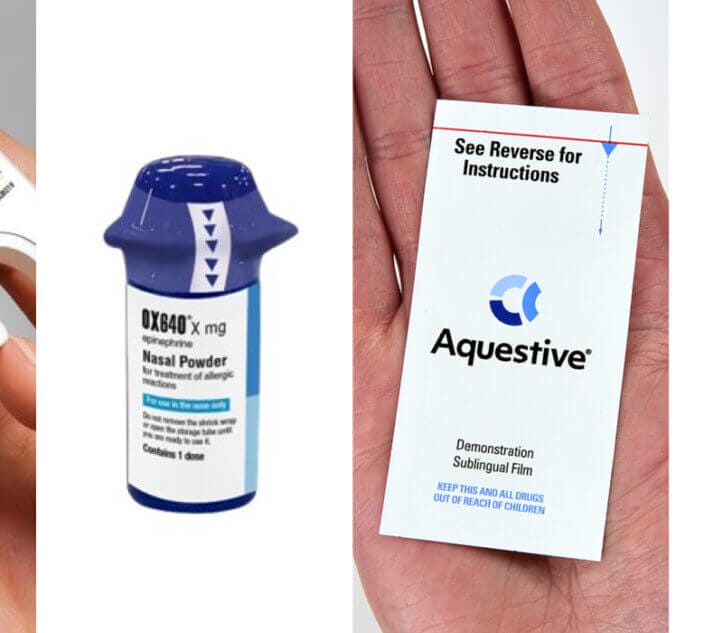Let them get dirty. Let them play with the dog on the floor. Don’t worry so much about washing their hands.
Research has increasingly been pointing to a link between the lack of exposure to bacteria in infancy and the rise in the prevalence of asthma and allergies, supporting the hygiene hypothesis.
But in a breakthrough, a Canadian study, published in Science Translational Medicine, finds evidence that acquiring four key types of gut bacteria in the first three months of life may be integral to avoiding the development of asthma.
“This discovery shows there’s a short, maybe 100-day window for giving babies therapeutic interventions to protect against asthma,” says co-lead researcher Dr. Stuart Turvey. He is a pediatric immunologist and director of clinical research at the Child & Family Research Institute at the University of British Columbia in Vancouver.
Identifying 4 Gut Bacteria
More than 300 families enrolled in the Canadian Healthy Infant Longitudinal Development (CHILD) Study took part in this research. Scientists involved examined the fecal samples of the infants. They discovered that four bacteria – dubbed FLVR (Faecalibacterium, Lachnospira, Veillonella, Rothia) – were present in lower levels among 22 children considered to be at high risk for asthma because of symptoms such as wheezing.
“The important advance this study made was that we identified four bacteria that were at lower levels in the intestine of children at very high risk of asthma,” says Turvey. “That naming is critical for any steps forward in terms of ways to prevent asthma.”
The differences in gut bacteria levels in the children once they reached one year of age were much less. This led the study authors to note the key importance of early exposure.
They say that the discovery may now lead to new treatments for infants at higher risk for asthma, including probiotic medicine. “We supplemented mice with those [FLVR] bacteria, and they were protected against asthma, proving causation beyond our correlation that was observed in infants,” says Turvey.
Although he points out that researchers aren’t yet close to testing possible treatments on human beings, this latest finding is a key step in reaching that larger goal.
Goals of Testing, Prevention
“I think this study opens the door to two potential applications,” says Turvey. “The first would be some type of diagnostic test where we could, say, take a stool sample in that first couple of months of life and look to see if the FLVR bacteria are low, as a way of identifying children who are at higher risk of having asthma. These children could then be watched more carefully and maybe started on preventative asthma medicines earlier.”
“But the ultimate goal really would be to try to prevent this disease,” he adds. “In order to do that we’d have to develop a safe version of the FLVR bacteria that might be able to administered to children in early life – something like a probiotic. That’s the ambitious goal, but it’s important to emphasize that we don’t know a lot about these bacteria – the FLVR family. So we’re working hard to understand and be sure that this would be safe.”
Following this study, the authors say the next step is reproducing the findings in a larger population of young children. The CHILD study, initiated by the AllerGen research network, involved more than 3,500 children across Canada tracked from pregnancy to the age of 5 years old. The initiative explores the factors that lead to the onset of allergy and asthma.
Over-Clean Environments
The researchers say these latest findings fit as part of the larger puzzle of earlier studies showing that exposure to bacteria, dogs, and farms, protecting against asthma.
“This research supports the hygiene hypothesis that we’re making our environment too clean. It shows that gut bacteria play a role in asthma, but it is early in life when the baby’s immune system is being established,” says the study’s co-leader microbiologist Brett Finlay.
Turvey agrees wholeheartedly, and says that, even though the current study has yet to yield new treatments, two big important messages remain for new parents.
“The first one would be, rethinking our relationship with bacteria,” he says. “Our work here emphasizes the importance of bacteria for health. What I think we can do right now is, just not be scared of bacteria. Tell our children to play outside, in a healthy way, a safe way, allowing them to interact with animals, and go to farms.”
“The other message, and it’s not a new message, but our research does support it: Being thoughtful about our use of antibiotics in children,” says Turvey.
“Children with bacterial infections absolutely should receive antibiotics, but if it’s a virus that’s causing the fever and runny nose, we should be thoughtful and cautious in our use.”






